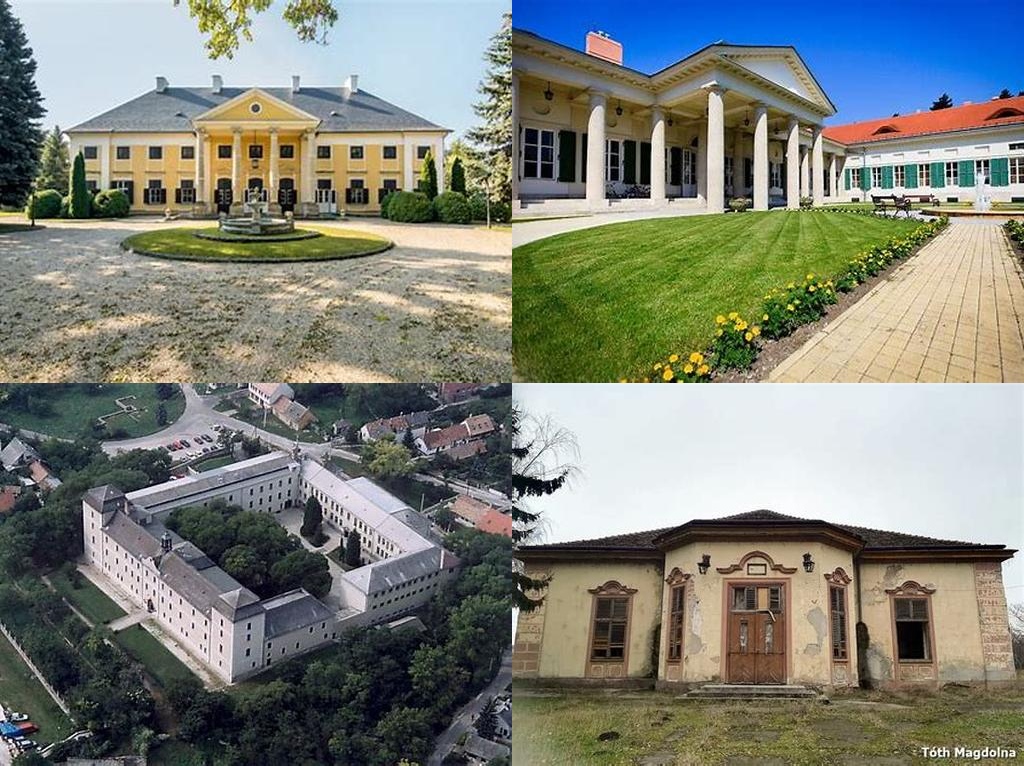
Zichy-kastély in Rajka doesn’t appear on every Hungarian travel bucket list, and that’s precisely what makes it so enticing. Tucked just past the misty ribbon of the Mosoni-Duna, near the intersection of Hungary, Slovakia, and Austria, this curious manor rests at a cultural crossroads. Stepping onto the grounds feels a bit like crossing the threshold into one of those forgotten corners of Central Europe where time pools instead of rushing on, where the past is both visible and quietly alive.
The castle, often called Zichy Castle or simply the manor in Rajka, is a tangible piece of history dating back to the early 18th century. The land originally belonged to the Counts of Rajka, but in 1740 it was acquired by the illustrious Zichy family, one of Hungary’s most storied noble lineages. The Zichys were known for their deep involvement with both the Habsburg court and the administration of Hungary, and the Rajka estate served as one of the family’s key seats outside the bustling capital. If these old lime-washed walls could talk, they’d share tales of balls, intrigue, and the gentle rumble of carriages arriving from Vienna.
Architecturally, the castle’s appeal lies in its reserved beauty. Unlike the extravagant baroque of Fertőd or the fairy-tale spires of Vajdahunyad, Zichy-kastély in Rajka embodies the practical elegance of Central European country manors. Most of what you see today dates from an extensive rebuilding in the late 18th century, giving the structure its characteristic U-shaped plan and restrained neo-classical flourishes. There are stuccoed facades, a welcoming arcaded veranda, and simple yet graceful proportions—nothing boasting, only the quiet assertion of former grandeur.
If you wander through the local legend and old registry books, you’ll run into the names of Count Antal Zichy, considered a patron of the estate in the 1800s, and later proprietors whose fortunes waxed and waned with the fate of the country itself. The castle stood witness to all of them, managing to survive the storms of revolution, shifting borders after both World Wars, and the slow encroachment of twentieth-century disinterest. Even during the Socialist era, the estate was not razed, but became home to community events, summer camps, and—according to local rumor—an occasional secret wedding.
One of the most endearing aspects of the Zichy-kastély in Rajka is the parkland that unfurls around the manor house. A canopy of ancient oaks and acacias, some dating back over two centuries, shade gently bound gravel paths. There’s a certain quiet here, a sense of insulation from the nearby highways and international borders. Sit for a moment on one of the weathered benches and you’ll catch the gentle susurrus of leaves overhead, mingling with snippets of Slovak, Hungarian, and sometimes even German conversation—testament to the diversity of the area shaped by generations of border-crossing and migration.
Inside, traces of its noble past hint through the faded paint and sunlit corridors. If you’re lucky enough to visit during an open day or cultural event (these are often organized by devoted local societies), you’ll notice the high ceilings and period detail: ceramic-tiled stoves, fragments of painted molding, the solid echo of your footfalls on timeworn wooden floors. Guided tours, sometimes led by local history enthusiasts, reveal stories both poignant and wry—tales of Zichy family eccentricities, of wartime desolation and unexpected rebirths.
The best way to experience Zichy-kastély is to let yourself linger. Bring a book, or perhaps a notebook if you’re disposed to reflect. The soft light filtering through tall windows, the gentle hush of the grounds, and the air perfumed by summer linden blossoms have inspired artists and wanderers alike for centuries. Take a stroll through Rajka itself, where you’ll find borderland cuisine in low-slung taverns, roadside shrines to saints half-forgotten elsewhere, and an atmosphere more like a living memory than a tourist attraction.
So if you’re in search of those rare places where absence feels like presence and where history is less a display and more a whisper in the air, take the detour to Zichy-kastély. You may find, as many before you have, that sometimes these quieter chapters of the past offer the most memorable encounters—a faded fresco here, a story told in the shade of an ancient tree, and the serene persistence of time itself in a borderland manor.





